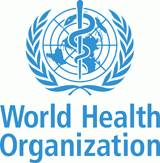Piloting Climate Change Adaptation to Protect Human Health in China
As part of the World Health Organization (WHO) and UNDP, global project on public health adaptation to climate change, the "Piloting Climate Change Adaptation to Protect Human Health in China" is working to strengthen the national capacity to respond to the increased health risks due to heat waves in China.
The project will focus on reducing the impacts of climate change on cerebro-cardiovascular diseases in the three project cities through the implementation of heat wave forecasting and early warning systems designed to protect human health.
China is one of seven countries taking part in this Global Pilot. The seven countries, Barbados, Bhutan, China, Fiji, Jordan, Kenya and Uzbekistan, together represent four distinct environments (Highlands, Small Islands, Arid Countries and Urban environments,) and their related health risks.
Project details
Levels of intervention
- National
Source of funds
- Global Environment Facility - Special Climate Change Fund
Key implementers
- National Governments
Funding amounts
Project partners
- Ministry of Health of the People's Republic of China
- World Health Organization (WHO)
- United Nations Development Programme (UNDP)
- Global Environment Facility (GEF)
- Institute for Environmental Health and Related Product Safety, China CDC
Introduction
As part of the World Health Organization (WHO) and UNDP, global project on public health adaptation to climate change, the "Piloting Climate Change Adaptation to Protect Human Health in China" is working to strengthen the national capacity to respond to the increased health risks due to heat waves in China.
The project will focus on reducing the impacts of climate change on cerebro-cardiovascular diseases in the three project cities through the implementation of heat wave forecasting and early warning systems designed to protect human health.
China is one of seven countries taking part in this Global Pilot. The seven countries, Barbados, Bhutan, China, Fiji, Jordan, Kenya and Uzbekistan, together represent four distinct environments (Highlands, Small Islands, Arid Countries and Urban environments,) and their related health risks.





Project details
The objective of this first global project on public health adaptation to climate change is to “increase adaptive capacity of national health system institutions, including field practitioners, to respond to climate-sensitive health risks”. This will contribute to the broader goal of ensuring that “Health sectors are able to cope with health risks resulting from climate change, including variability”.
China's Project Objective
To strengthen the national capacity to respond to the increased health risks due to heat waves in China.
Key Health Concerns and Vulnerability to Climate Change
China, with its fragile ecological environment, is vulnerable to the negative impacts of climate change. In recent years, China has experienced more frequent and higher intensity extreme weather events. Floods, heat waves, freezing rain, snow weather etc which were once rare now happen on a regular basis causing great harm to health and society. The largest impact on health from climate change in China is heat; particularly in urban environments which can change the incidence and mortality of heat or cold related disease.
China experienced extremely hot summers in 1988, 1990, 1994, 1998, 1999, 2002 to 2008, resulting in thousands of excessive deaths. Mortality was particularly high among those 60 years of age and older, and heat waves present serious risks to infants. It is estimated that the number of deaths caused by the recorded heat waves is 2-3 times above normal summer periods. These deaths could be greatly reduced with an early warning system in place. Heat waves can also increase the morbidity and mortality due to cerebro-cardiovascular and respiratory system diseases.
Cerebro-cardiovascular diseases already have a huge impact in China, with the country having the highest morbidity of cerebro-cardiovascular diseases in the world. 45% of all deaths in China, is due to cerebro-cardiovascular diseases. The health care cost and labour force loss from cerebro-cardiovascular diseases is more than US$2,500 million per year. This burden will only increase with climate change and rising temperatures.
Expected Benefits
The most significant benefit of implementing effective adaptive measures will be the reduction of the incidence and mortality of the cerebro-cardiovascular diseases, thus improving people's quality of life and greatly reducing the social-economic burden.
Other benefits include:
- Facilitating the harmonization of health issues with economic development.
- Strengthening health education and training on the impacts of climatic change on the environment and human health.
- Increase awareness of the potential impacts climatic change across various media.
Results and Learning:
The project will focus on reducing the impacts of climate change on cerebro-cardiovascular diseases in the three project cities through the implementation of heat wave forecasting and early warning systems designed to protect human health. The project will do this with a focus on the following capacity development:
- Data collection - Additional data collection and research is needed to quantify the health risks of climate change and to identify effective and efficient adaptation options.
- Data sharing - There are still some gaps in data sharing among environmental, meteorological and health agencies. Therefore a scientific research database will be created using national and international meteorological and disease data; this database will provide accurate, prompt, and authoritative disease monitoring and will produce products relevant for disease prevention.
- Communication and Cooperation - The project will strengthen communication between decision-makers and the public health system. It also will encourage and support Chinese scientists to participate in the international activities to reduce the health impacts of climate change.
- Public awareness - There is limited public knowledge of the health impacts of climate change and the actions individuals should take to protect themselves, particularly during heat waves.
- National
- National Governments
Local governments, including health, meteorological, education, transportation, finance departments and the individuals in the pilot communities (i.e. three large cities in China, each with a population over 6 million: Harbin, Nanjing, Guangzhou).
- Ministry of Health of the People's Republic of China
- World Health Organization (WHO)
- United Nations Development Programme (UNDP)
- Global Environment Facility (GEF)
- Institute for Environmental Health and Related Product Safety, China CDC
News
Key results and output
Project Components:
- Climate change and health early warning and planning systems
- Institutional and technical capacity to manage climate change health risks
- Demonstration Measures to reduce vulnerability
- Regional Cooperation to address climate change health risks
Expected Outputs:
Outcome 1: An early warning system is established for impending heat waves to protect people at risk of cerebro- and cardiovascular diseases.
- Establishment of a multi-sectoral cooperation mechanism of health sector, meteorological bureau and environmental protection bureau.
- Collection and analysis of information on the relationship between meteorological and health data to establish a model to forecast health risks for vulnerable groups.
- Design of a system for “early forecast, early prevention and early treatment”, providing graded forecasts of the severity of health risks in the project community.
Outcome 2: Systemic and institutional capacity of health sector will be improved to respond to climate-sensitive health risks.
- Setting up a steering committee for actions during heat waves, and implementing resource sharing, information and skill exchange.
- Community medical consulting personnel trained with respect to health risks during climate extremes, necessary health consultations and services, and self-protection measures.
Outcome 3: Improve the adaptation capacities and emergency medical plans implemented for cases of cerebro- and cardiovascular diseases during heat waves.
- Emergency plan and support system established for high risk people in the project sites.
- Public awareness raised through a coordinated media campaign, including videocasts with health education lectures, and regular update of health education and consulting services in communities and schools.
- Communication and education provided to Government and other decision makers on health risks associated with extreme heat, and effective behavioural responses.
- Strengthened bilateral and multilateral cooperation through the participation and communication of decision-makers, government officers and researchers in international exchange.
Reports & publications
Videos & multimedia
Newsfeed
Contacts
- WHOMr Mao JixiangWHO Country Contact
- Ministry of Health P.R. ChinaMr. Zhao YuechaoDeputy Director Division of Environmental Health
- UNDPPradeep KurukulasuriyaUNDP Senior Technical Advisor on Climate Change Adaptation
- WHOJoy GuillemotPublic Health and Environment Department WHO
